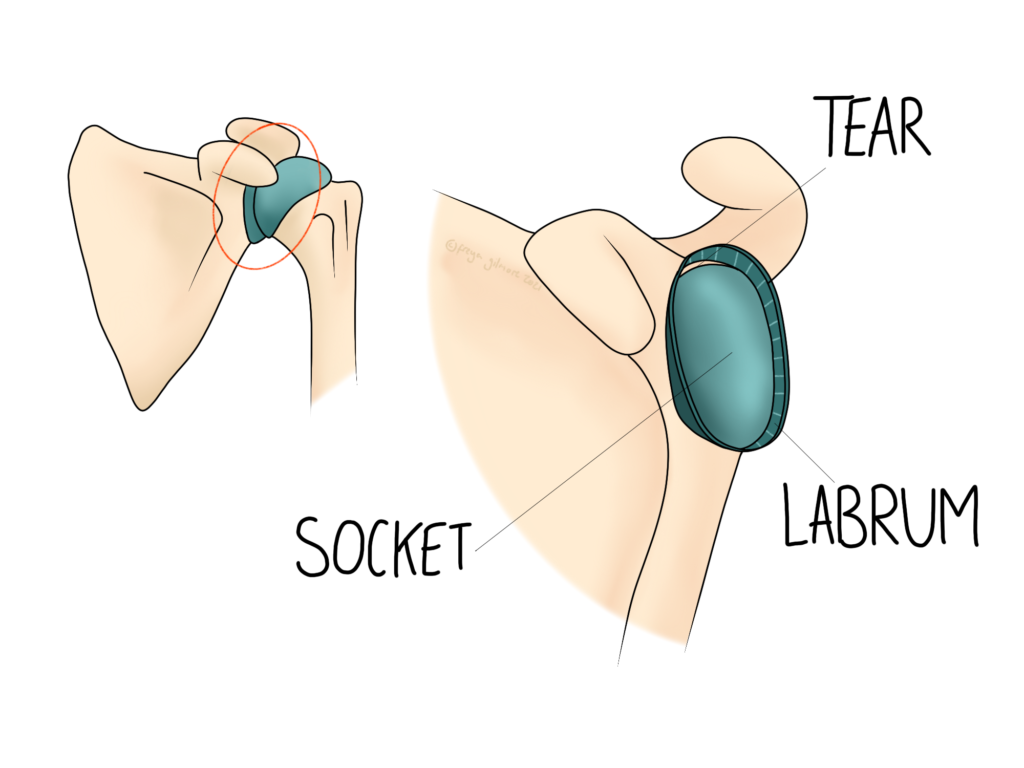

“Labrum” is latin for “lip” and refers to the ring of cartilage that supports some ball and socket joints. Both the hip and shoulder joints have labra.

Ball and socket joints are particularly mobile, and the labrum helps to keep movement within a healthy range. But it is possible for the labrum itself to be injured, often by a forceful injury.
Cartilage is slow to heal, so symptoms can persist for a while if not addressed. Your osteopath will aim to improve local joint health to aid healing. They can also advise you on how to best look after the joint as it heals.
The shoulder is a very mobile joint. This is due to the small and shallow socket. Unfortunately, this means that it is not the most stable joint. We rely on the soft tissues (ligaments, muscles, and cartilage) around the joint to protect the it.
SLAP stands for Superior Labrum Anterior + Posterior. This kind of injury is particularly prevalent among throwing athletes, but can also be caused by a fall or other trauma. It occurs near the point where the biceps tendon attaches to the labrum- an area under a lot of stress during throwing movements.
This problem may present with pain, stiffness, and clicking or locking of the shoulder on certain movements. It may be particularly difficult to use the arm in overhead movements, or performing movements like putting on a coat sleeve.
Hip labrum injuries may be caused by road traffic accidents, falls, or shearing forces as with twisting. Although the hip socket is deeper and therefore more stable than the shoulder, the cartilage can still be injured. Symptoms are often quite generic to a number of hip problems, and may include:
FAI is slightly different. Rather than being a form of labral tear, its presence can predispose the development of a tear. In this condition, part of the ball and socket is misshapen. This can affect the “ball” after childhood issues: Perthes Disease, repetitive movements, or some fractures can predispose this. The socket can cause the same problem if it extends further than it should.
The problem with FAI is the ball makes excessive contact with the socket, causing pain and stiffness. These symptoms are particularly evident after periods of prolonged or repeated hip flexion, such as sitting or performing squatting exercises. This unusual force can play a role in the development of FAI later in life. FAI is also associated with the development of osteoarthritis in the hip, so it’s well worth doing something about it.
Cartilage is slow to heal, but benefits from full, gentle movement. This can be difficult to achieve on your own, as the necessary movement may be painful. Your osteopath can do this movement for you, and give you exercises to achieve the movement yourself. When a joint is painful, the muscles around it often tighten it up to protect it. Unfortunately, this prevents the required movement from happening organically. We can help relax these muscles too, to give your body the best conditions in which to heal itself.
If your hip or shoulder injury sounds like this, get in touch with us today.